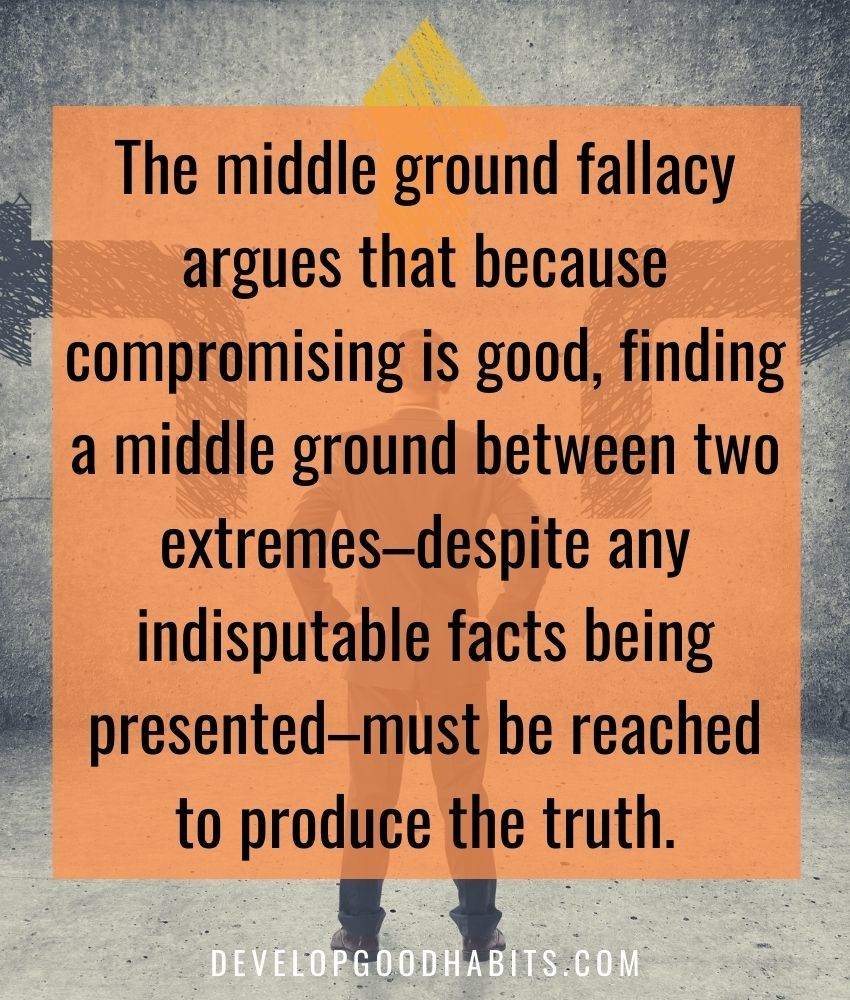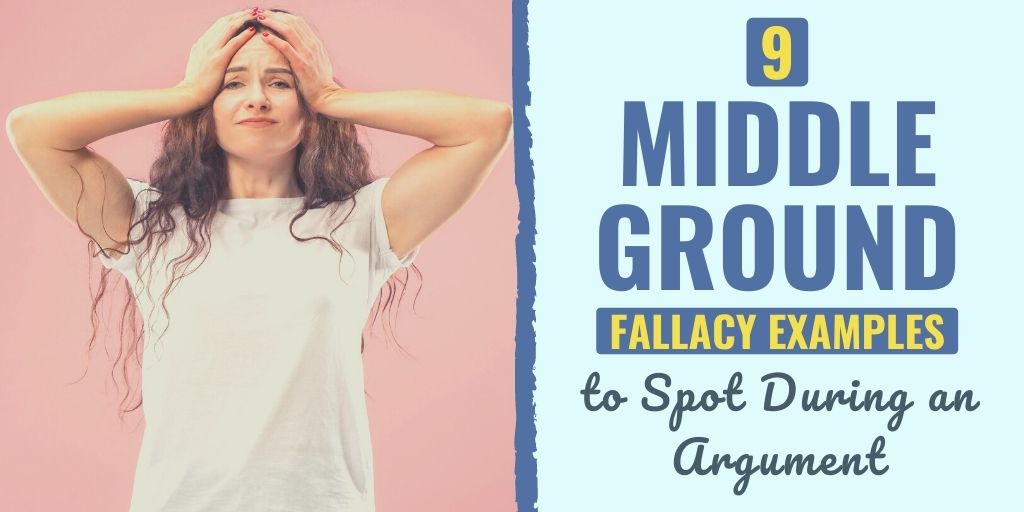There might be affiliate links on this page, which means we get a small commission of anything you buy. As an Amazon Associate we earn from qualifying purchases. Please do your own research before making any online purchase.
What is “truth?”
Truth has been a topic up for discussion for thousands of years, especially in the eyes of philosophers.
But when it comes to everyday people, we typically accept truths as being any ideas or concepts that aim to represent reality or correspond to it in some way. The truth is represented by the things that we see as being tangible or have enough evidence behind it that no other answer seems logical.
It’s not uncommon for the truth of a matter to lie somewhere between two extreme arguments– for example, you could argue that most people prefer to take a warm shower over one that is either freezing or boiling. However, in some cases, this method of thinking can bias our thoughts, therefore leading to a logical fallacy. Sometimes, neither extreme argument is accurate, therefore making a compromise between the two also untrue. Or, one side is completely accurate and the other is very far from the truth–and half way between true and false is still false.
In this article, we will look at the definition of the Middle Ground Fallacy and nine common examples to look for in an argument, because being able to spot lapses in logic is an invaluable skill.
Let’s start by further defining this concept.
What Is a Middle Ground Fallacy?
The middle ground fallacy argues that because compromising is good, finding a middle ground between two extremes–despite any indisputable facts being presented–must be reached to produce the truth.
Here is what this looks like in logical form:
Person 1 says A is correct.
Person 2 says Z is correct.
Therefore, person 3 concludes that the correct answer must be somewhere around M.
It’s easy to assume that extreme views are automatically wrong because they’re often absolute…and extreme. This makes the middle ground a seemingly safer conclusion, especially for risk-averse people (who are often the people who opt for this option). But, while the truth on a topic often falls somewhere between two extremes, this cannot simply be assumed without taking any evidence into consideration.
The middle ground fallacy is also often accepted by those who assume all views are valid, so compromising is the best path to making everyone happy. In fact, this fallacy gains its influence from the fact that, in many cases, a moderate position on a matter is correct.
Assuming a middle position is always correct simply because it’s in the middle demonstrates poor reasoning–however, that doesn’t always make it wrong. But again, it also doesn’t always mean the middle choice is the truth.
Consider this statement: “A moderate amount of exercise is better than too much or too little exercise.” A good argument can be made for this, however, this isn’t due to the fact that the truth lies somewhere between two extreme points. Rather, it’s because getting either too much or too little exercise can be harmful for your health.

In cases such as this where moderation is the truth because it lies somewhere in between too much and not enough, the middle position of “enough” is the best option essentially by default. However, the moderate position in this case is still not posed in a way that it is supported by legitimate evidence, so it can’t be truly accepted.
When this logical fallacy is made, the middle ground is accepted without confronting either extreme argument to look for some evidence of truth. If a person using the fallacy offers a conclusion, it’s only an arbitrary conclusion that has no rationale behind it aside from the fact it's in the middle. In some cases, this may lead someone to conclude a moderate position between two views where no middle ground actually exists.
Let’s take a look at some examples of middle ground fallacies and then discuss this type of argument in a bit more depth to see how using it can be harmful.
9 Middle Ground Fallacy Examples to Spot During an Argument
1. “One of my friends told me that lying is never acceptable, while another friend said it’s actually alright to lie whenever you want to. Therefore, it must be ok to lie sometimes.”
The way this statement is worded follows the form we looked at earlier, making it easy to spot as being a middle ground fallacy.
2. “Elizabeth thinks the best way to increase business revenue is to revamp the entire company website. However, James is strongly against making any adjustments to the website. The best approach must be to redesign just a few pages of the website.”
In this case, the person making the argument is trying to please both sides, which is a common reason people fall back on this type of fallacy in an argument.
3. “You’re selling your car for $10,000 because after doing some research, you find that to be a reasonable book value. But someone offers you $1, claiming that is all the car is worth. You should sell the car for $5,000 because that must be its true value.”
This conclusion isn’t backed by any evidence, it’s simply finding a moderate solution.
4. “Rebecca believes a dilapidated house on her street should be torn down. Her neighbor claims it has historical significance and should remain as is. The best solution is to tear down half of the house.”
In this case, there isn’t really a middle ground option, the house is either torn down or it’s not. So this conclusion isn’t valid.
5. Person A says the sky is red. Person B says the sky is white. Person C concludes that the sky must be pink.
This is another example of accepting a moderate stance, likely with the intent of trying to end the argument.
6. One mother tells another in the waiting room of the pediatrician’s office that vaccines cause Autism. The other mother responds by saying that vaccines do not cause Autism. Someone who overheard the conversation in the waiting room concludes that the truth is some vaccines probably cause some people to develop Autism.
This is an example of a middle ground fallacy that has led to great debate and caused harm. The idea that vaccines cause Autism has been debunked, however, it has not only lead to many people now walking around unvaccinated, it also took a lot of research money to prove that this theory isn’t true when that money could have been spent in a different way that would actually help those who have Autism.
7. Some might say that arsenic is an essential part of the human diet, but others respond by saying it’s a toxic and very dangerous substance. The truth must be somewhere in between.
This conclusion didn’t take the validity of either stance into account. There was no research done to see if one was true or not, the conclusion simply is a default answer.
8. A boy’s parents get divorced and they can’t agree on which parent he should live with, so they decide he will spend one week with his father in Maryland and the next with his mother in Delaware.
Here, the parents did not take any negative consequences of the middle ground into consideration. This conclusion results in the boy going to school halfway in between the two states, leaving him with no friends from school living within 30 minutes of where he is living at any given time, and it makes him constantly tired from travelling.
9. A scientist claims that climate change is real. A politician negates the claim by saying climate change in a myth. In response, a journalist says the climate may be changing, but it’s not our fault.

In this last example, you can see again how believing the middle ground fallacy can be harmful. Journalists try hard to avoid accusations of being biased toward any one side of an argument, leading them in this case to construct a sense of uncertainty among people about the validity of climate change.
They’ve done this by giving an equal platform to both climate change experts who present concerns that are backed by research and climate change deniers, who often represent institutes funded by corporate interests. This leads journalists to fuse objectivity with bias– burying the actual truth in the process.
The media has a lot of power when it comes to shaping people’s beliefs, especially when it comes to complicated subjects that most people know very little about. So as journalists give their audience a choice to either worry about a big scientific issue or to not add it to their list of things to stress over because it might not exist, many people will choose to ignore the issue and blindly continue with their everyday practices that may be making the issue worse.
Final Thoughts on Middle Ground Fallacies
Compromise is often something that people prefer to allow both sides of an argument to retain some validity, allowing a wider range of interests to be taken into account. This increases the chances that everyone gets something and people can walk away thinking that the compromise was better than their point potentially being entirely invalidated.
This is often how political choices are made because people are often drawn to utilitarian statesmen who propose and accept compromises in order to get things accomplished.
The middle ground fallacy is usually used to bring a debate or discussion to an end, not to keep it moving forward. People really dislike uncertainty, so agreeing upon something in the middle often seems like a fair remedy.
However, ignoring the potential that one or both of the extreme sides could be entirely true or false makes any form of compromise between them invalid as well.
When looking for this type of fallacy in an argument, it’s important to pay attention to how things are worded. Are they backed with evidence? Does the statement seem like a blind compromise? If so, it’s probably a middle ground fallacy.
More Examples of Logical Fallacies
- 5 Appeal to Nature Fallacy Examples in Media and Life
- 6 Outcome Bias Examples That Can Negatively Impact Your Decisions
- 7 Self-Serving Bias Examples You See Throughout Life
- 7 Omission Bias Examples That Negatively Impact Your Life
- 6 Authority Bias Examples That Might Impact Your Decisions
- 5 Burden of Proof Fallacy Examples
- 5 Appeal to Tradition Fallacy Examples in Life
- 5 Appeal to Authority Logical Fallacy Examples
- 7 False Cause Fallacy Examples
- 7 Appeal to Ignorance Fallacy Examples
- 7 Appeal to Common Sense Logical Fallacy Examples
- 5 Post Hoc Fallacy Examples (and How to Respond to This Argument)
- Gambler’s Fallacy: 5 Examples and How to Avoid It
- 5 Appeal to Anger Fallacy Examples Throughout Life
- 7 Halo Effect Bias Examples in Your Daily Life
- 7 Poisoning the Well Examples Throughout Your Life
- 7 Survivorship Bias Examples You See in the Real World
- 7 Dunning Kruger Effect Examples in Your Life
- 7 Either Or (“False Dilemma”) Fallacy Examples in Real Life
- 5 Cui Bono Fallacy Examples to Find Out “Who Will Benefit”
- 6 Anchoring Bias Examples That Impact Your Decisions
- 7 Virtue Signaling Examples in Everyday Life
- 7 Cherry Picking Fallacy Examples for When People Ignore Evidence
- 9 Circular Reasoning Examples (or “Begging the Question”) in Everyday Life
- 9 Appeal to Emotion Logical Fallacy Examples
- 9 Appeal to Pity Fallacy (“Ad Misericordiam”) Examples in Everyday Life
- 9 Loaded Question Fallacy Examples in Life and Media
- 9 Confirmation Bias Fallacy Examples In Everyday Life
- 9 Bandwagon Fallacy Examples to Prevent Poor Decisions
- 5 Red Herring Fallacy Examples to Fight Irrelevant Information
- 5 False Equivalence Examples to Know Before Your Next Argument
- 7 Hasty Generalization Fallacy Examples & How to Respond to Them
- 6 Straw Man Fallacy Examples & How You Can Respond
- 6 False Dichotomy Examples & How to Counter Them
- 7 Slippery Slope Fallacy Examples (And How to Counter Them)
Finally, if you want a simple process to counter the logical fallacies and cognitive biases you encounter in life, then follow this 7-step process to develop the critical thinking skills habit.

Connie Mathers is a professional editor and freelance writer. She holds a Bachelor's Degree in Marketing and a Master’s Degree in Social Work. When she is not writing, Connie is either spending time with her daughter and two dogs, running, or working at her full-time job as a social worker in Richmond, VA.


